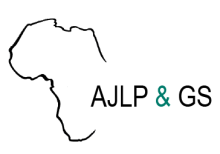/ library resources
Showing items 1 through 9 of 87.Climate warming and human actions both have negative impacts on the land cover of Mongolia, and are accelerating land degradation.
Agriculture consumes the largest share of freshwater globally; therefore, distinguishing between rainfed and irrigated croplands is essential for agricultural water management and food security.
Vegetation buffers local diurnal land surface temperatures, however, this effect has found limited applications for remote vegetation characterization.
Abstract. Drought is predicted to increase in the future due to climate change, bringing with it myriad impacts on ecosystems. Plants respond to drier soils by reducing stomatal conductance in order to conserve water and avoid hydraulic damage.
Context and backgroundAlthough a growing body of literature maintains that riparian reserves are infrequently conserved, a knowledge gap exists on how their status may be assessed through a triangulation of spatial and temporal approaches.Goal and Objectives:This study, therefore, sought to inves
Mining And Its Implications On Food Security In Amansie West And South Districts, Ghana.
Spatio-Temporal Measurements Of Urban Sprawl Dynamics In Oyo Town, Nigeria
In Cameroon, the pressure on wetlands, which cover nearly 70% of the national territory, appears to be increasing, whether for subsistence needs, firewood, grazing, logging or expansion of development projects.
Pagination
Land Library Search
Through our robust search engine, you can search for any item of the over 73,000 highly curated resources in the Land Library.
If you would like to find an overview of what is possible, feel free to peruse the Search Guide.



